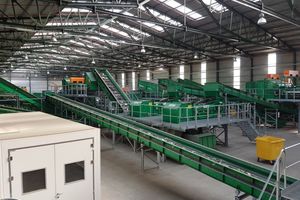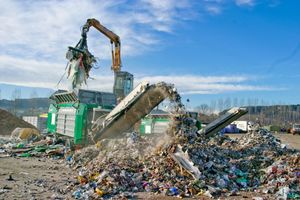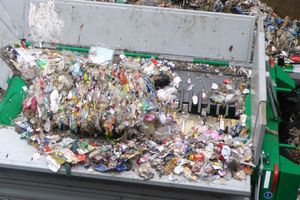Solid waste is what we’re good at
The Circular Economy action plan aims at reducing the EU’s materials footprint, including by means of higher recycling and reuse rates. This brings new challenges for the waste industry.
Mixed residential waste has high recycling potential. But increasing the recycling rate presents waste processing companies and equipment manufacturers with challenges. Processing lines for mixed residential waste need to be designed in such a way that the process is recyclables-oriented and efficient. They also need to be able to adapt to changing conditions. We distinguish between three steps in processing solid waste – shredding, separation and sorting.
Shredding and homogenizing
Shredding prepares mixed or presorted waste for separation. Bags, bundles and agglomerates are broken up and brought down to a uniform particle size. Flexible and bendable components like plastic are shredded to a lesser degree or not at all, but brittle materials size down well. Low-speed shredders with constant throughput like the Komptech Terminator are ideal for solid waste. This single-shaft shredder has low susceptibility to contraries, and generates a steady material stream whose grain can be continuously graduated to fit downstream processes.
Screening and separation
The next step, screening, separates the material stream into size classes. Organic material is concentrated in the fines (particle size under 80 mm), while high-caloric and recyclable materials predominate in the oversize fraction. This creates a first sorting effect. For this step Komptech offers drum screens, disc screens and spiral shaft separators, in mobile and stationary versions. A ballistic separator makes subsequent sorting much more efficient. This machine separates the material stream into heavy cubic (3D) and light flat (2D, flyaway) fractions, enabling precise configuration of the downstream sorting equipment to match the composition of the material stream. Fines removal is also done by means of the holes in the screen elements, which can be selected for target size. The Komptech Ballistor is an example of such a machine.
Sorting
To get usable fractions, each fraction must be physically distinguishable from the remaining material, for example by grain size, flyability, conductibility, density or light absorption (colour). The interplay of detection unit and separation system works correctly only when the particles on the intake conveyor are largely separate. Currently, sorting individual materials for quality is feasible only to a limited degree. Exceptions to this are ferrous and non-ferrous metals, which can be separated by magnetic or eddy current separation. Sensory factors, digitalization and machine learning play an increasingly important role in improving the recycling rates of mixed material streams. Together with partners in science and industry, we are working on research projects to drive the technology forward.
https://www.komptech.com/en.html#/



